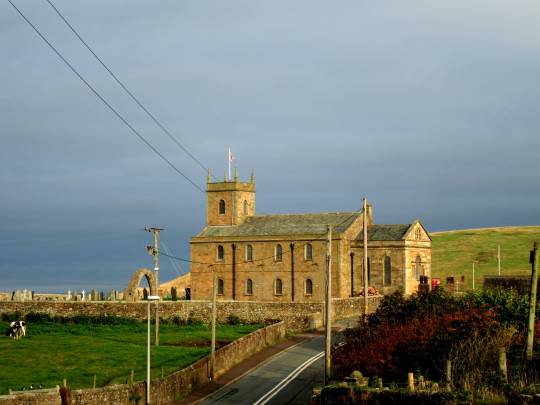#st briget
Explore tagged Tumblr posts
Text

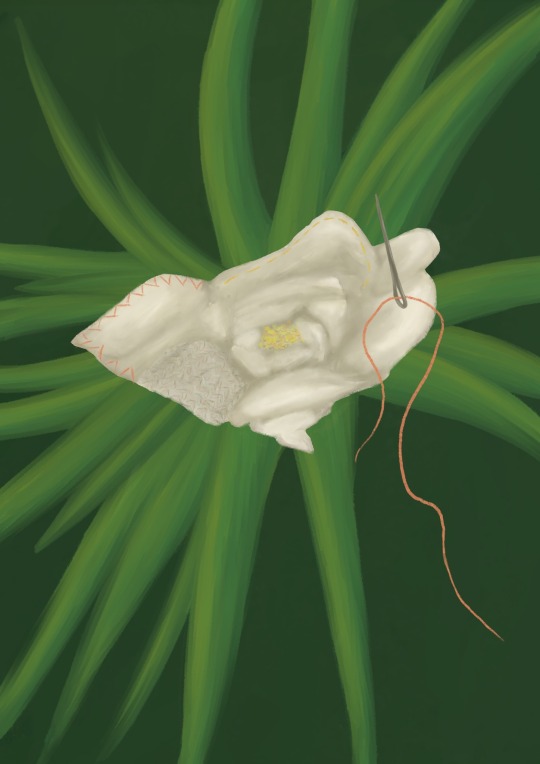
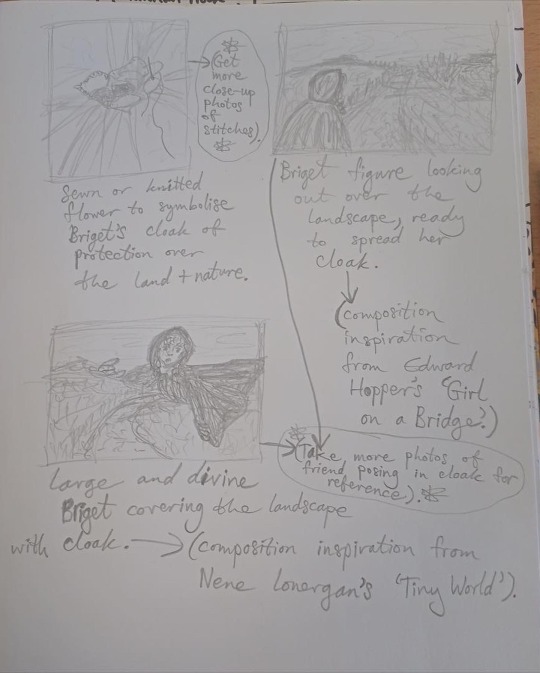





#art #artist #design #procreate #ipad #drawing #sketch #learning #practice #digital #digitalart #portrait #progress #craft #stbrigid #brigit #briget #stbriget #brigid #stbrigidsday #stbrigidscross #cloak #myth #mythology #folklore #folktale #religion #irish #nature #goddess
#artwork#digital art#drawing#art#artist#procreate#sketch#learning#practice#doodles#st bridget#st brigid#st briget#cross#st Bridget’s day#st Bridget’s cross#cloak#nature#craft#goddess#myth#mythology#folklore#folktale#religion#irish history#irish mythology#Ireland
1 note
·
View note
Text

St. Briget / Brigid Guilty Gear
#bridget#my art#fanart#i decided to do a bridget as brigid fanart because feb 1st is brigids day#also the idea of bridget using a brigids cross as a yoyo is hilarious to me#also cow roger
2 notes
·
View notes
Photo


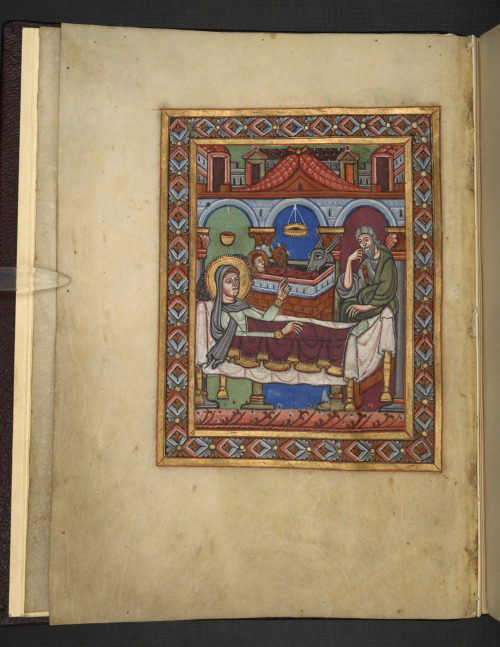
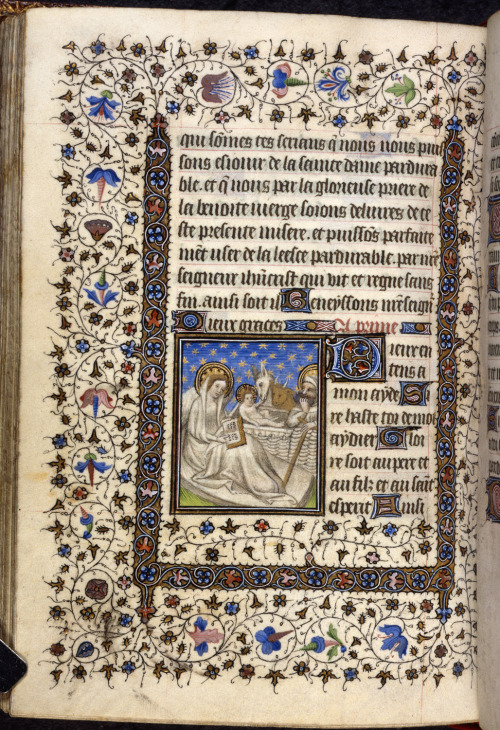


1. Nativity in the Benedictional of St Æthelwold, Winchester, 963-984: Add MS 49598, f. 15v 2. Nativity scene on the Sarcophagus of Stilicho in Milan, AD 400. 3. Scene of the Nativity in an architectural setting with the ox and ass at the manger, Germany (Swabia, possibly Hirsau): Egerton MS 809, f. 1v 4. Nativity with Ox and Ass in a Book of Hours, France, 1400-1425: Harley MS 2952, f. 142v 5. Illustrated almanac showing the number of years since key events in history including the Birth of Christ (1412 years previously), England, 1400-1412: Harley MS 2332, f. 20v 6. A Nativity scene with musicians in the four corners, from the Maastricht Hours, Netherlands (Liège), 1st quarter of the 14th century: Stowe MS 17, f. 15v
The Ox and Ass in the Nativity
Picture a traditional Nativity scene. The Christ Child is at the centre with his parents, Mary and Joseph, surrounded by a host of familiar characters who played a role in the unfolding events. There are angels, shepherds, the Three Wise Men or Magi (although they can be in a separate scene of the Epiphany), the innkeeper, sometimes even midwives, and, of course the ox and the ass. Images of the Nativity in medieval manuscripts also tend to contain some of these familiar characters. Yet after the three members of the Holy Family, the most frequently depicted are the ox and the ass. This is rather surprising as they are not mentioned in the Gospels, but they are one of the most ancient and stable elements in the iconography of the Nativity. The earliest surviving text mentioning their presence dates from the 8th century (the Gospel of Pseudo-Matthew, which was not included in the New Testament). However, the first known example of a Nativity scene in art, a carving on the Sarcophagus of Stilicho in Milan dated to AD 400 [Fig 2], contains just Christ in the manger with the ox and ass on either side; Mary and Joseph are absent. One of the oldest medieval images of the Nativity in our collections [Fig 1] contains a friendly-looking ox and ass, watching over Jesus in a rather elaborate crib, hidden in a corner beneath Mary, who takes centre stage. The midwife and Joseph appear to the right (midwives are found most often in earlier images but gradually disappeared from the iconography). This elaborate and stylised miniature is from the Benedictional of St Æthelwold, a manuscript made in Winchester in the 10th century. The ox and ass (or donkey) remained prominent features of Nativity scenes, often found alongside the Christ child. In [Fig 3] Christ is placed above Mary in a raised manger and the animals appear to have their noses in the manger where Jesus lies. Some commentators have interpreted this as a kind act by the animals, breathing on the baby to keep him warm, while for others the animals are feeding from the manger, referring to the passage in the Gospel of John, where Christ calls himself ‘the bread of life’ and promises eternal life to those who feed on him. A charming domestic scene in a Book of Hours in French [Fig 4] shows Mary reading or saying her prayers, while Joseph seems to watch her in bemusement (though his head-in-hand pose may denote that he is tired or sleeping). Both seem unaware that the baby Jesus, again at some distance, apparently has his hand in the donkey’s mouth. Of the two animals, the donkey is often seen as more playful, and so perhaps he is allowing the baby to prod him, while the ox (traditionally a sacrificial animal in the Bible) was seen by early Christians as symbolic of Christ’s sacrifice, so he is often shown as the more serious of the two. In the 14th century, St Briget of Sweden’s vision of the Nativity had a major influence on subsequent iconography. She described seeing the ox and the ass and the Virgin kneeling before a ‘glorious infant lying on the earth, naked and glowing’ with ‘ineffable light and splendour’. And so images of Christ lying naked, worshipped by Mary (and sometimes Joseph) became common in devotional manuscripts. The ox and ass are never too far away, a benevolent presence, Christ’s first playmates. [...] A picture of the two animals beside a baby in a manger is the simplest and most easily recognisable symbol of the Nativity. An example of this is a set of representations of key events in a medieval almanac [Fig 5]. Each event is depicted with the number of years since it occurred, and, following the Ark (4308 years ago), is a simplistic drawing of an ox and ass on either side of a Christ in a crib. The animals make it obvious to the viewer that this is not just any baby, but Christ at his Nativity and so we know that the almanac was produced 1412 years after the birth of Christ, around the year 1412. And lastly, in this rather worrying scene [Fig 6] the Christ Child seems to be trying to leap out of the manger. The donkey is holding him back by grasping his swaddling garments with its teeth. Again, Mary and Joseph are oblivious, though the ox watches in horror. Whether symbols, playmates, transport or babysitters, it certainly seems that the ox and the ass were useful characters at the Nativity.
All pictures and texts are from the blog linked in the heading; the blog post has more pictures and some more descriptions. The emphases made in this post were made by me.
16 notes
·
View notes
Text
Imbolc
A cross quarter day, that is mid point between the Winter Solstice and the Spring Equinox which occurs between the 2nd and the 7th of February. This year it is on the 4th. But rather than it being exactly represented on the calendar the festival is given the fixed calendar abode of the 1st of February or St Brigets’s Day or Imbolc to give it its proper ancient title.
Misty origins of this festival are still suggested in the practices still in circulation today, chiefly the making of Brigets’s crosses from reeds a tradition that predates the introduction of the Christian cross. This simple mandala offers protection from fire for the coming year and should be placed on or near the entrance way for full effect.
I attempted making one today but the reeds were too brittle. So I will try again for the 4th and soak the reeds in water to make them more pliable. I cut the reeds this morning from the banks of the canal.
3 notes
·
View notes
Text
Hello everyone.
I haven’t been posting in the last couple of days and it’s for a good reason. On the evening of May 4th 2019 Alice, or as you have come to know him, Big Al passed on. It was a combination of things, first and foremost, his old age. Then there was the fact that he hadn’t been dust bathing due to what I can only assume was arthritis, so the mites were particularly rough on him. These things led to him developing a yeast infection, which was the reason I gave him a bath the other day. But this isn’t about his death, let’s talk about his life.
Way back in what I assume was the spring of 2011 we were constructing a chicken coop, I was 8 years old at the time and was excited to get chickens. Easter morning came along and the coop wasn’t quite finished yet. However, there were 4 Easter Egger chicks in the coop, these were, of course, Alice, Angel, Lemon, and Millard. They were about 5-7 days old when we got them and were already sporting tails. We eventually finished up the chicken coop and these girls grew up nicely. Alice was at the top of the pecking order with Lemon as her fierce second in command and best friend. Then, as you may know, tragedy struck on October 31st of that year, a fox attacked the flock and Lemon tragically lost her life. Angel escaped alive but with many injuries, namely a broken wing and many scratches. Millard was blessedly unharmed, she went into the henhouse and got onto a roost when she realized there was trouble. Then there was Alice, when I found Lemon’s body I screamed, which alerted one of the foxes in a bush nearby, it spooked and took off running, and I naturally followed. I chased it to the back of our wooded pasture where I found a bunch of feathers, and the fox had escaped, but when I looked down the trail I saw Alice walking back to the barn. After checking around for the foxes once more, I headed back towards the house, my mom joined me in the search, we found Alice in the corner of one of the stalls, at first my mom thought she was dead, but she was alive! Sporting only some scratches and feather loss, she healed up well. We then got Acorn from my grandmother to make up for the loss of Lemon, Alice was distraught at the loss of her best friend, but bonded with Angel and Millard.
A couple of years went by with little trouble, we ended up acquiring four Royal Palm turkeys, Acorn did not take nicely to these birds, she was a very racist chicken in her lifetime. Nevertheless, Alice continued to rule the flock. The turkeys came and went, and we got a few fertile eggs from a friend of ours, whos grandmother breeds chickens in Kansas. The eggs hatched and the chicks were Briget, Vanilla, Zippy, Brownie, Eastre, and Frizzy (a frizzle we didn’t keep for long.) these Biddies grew up into some fine hens and roosters. Then one day my brother and I were sitting on the back porch with Zippy, he was an ornery little roster who loved to crow, and we were discussing methods of keeping him quiet. When all of the sudden we hear a crash of palm frond leaves right where Alice was walking just seconds prior. We rushed out to discover that something had grabbed her, she ended up walking right out of the bushes with a limp and fluid in her lungs. She got around just fine despite these disabilities and continued to rule the roost with an iron talon.
It was mother’s day 2015 or 2016 when we had another attack, it was a coyote this time and Millard was the one who got kidnapped, she was always such a sweet bird, and knew how to stay out of trouble, but she ended up getting dragged off of the property, we looked in and around the ditch for what must have been an hour or more. We ultimately found her underneath a tree not far from where we started. The poor chicken was bleeding and something might have been broken. We brought her back home and tried to nurse her back to health, she ended up living for a whole week before she ultimately succumbed to her injuries. Of course, the flock was distraught, two of the four old ladies were gone. However, they managed to move on, Alice, Angel, and Acorn had a flock to rule after all.
We then got Hazelnut, Sunny, Copper, and Tweety-Bird. These four grew up to be very fine young birds. It was around this time when I started the blog. Tweety-Bird looks so much like Millard did, the old lady council accepted her into their ranks. From then on, you all know the story. We had many who died and many more who arrived, as the circle of life goes. I continued documenting the life and death of the flock on this blog. Alice gave us many eggs when he was a she. I would go on to bring Alice inside during the day to get out of the heat, and Angel in the night to get out of the mosquitoes. Acorn died, leaving only Alice and Angel to rule the roost, these two grew infinitely closer, eventually sharing equal leadership. Angel, being the only motherly one of the old ladies, went on to mother one more clutch of chicks with copper, and as you know, she died during her molt. That was it, Alice was the last old lady, but soon to be old man. Now that none of his sisters were around to judge him, he transitioned into a rooster, he crowed, courted hens, and the fluid in his lungs even cleared up (although the limp still remained.) He was the gentlest rooster we’ve ever had, he would let me hold him, give him a bath, trim his nails, and dote on him of course. We weren’t expecting him to live through the New Year, but he pulled through and started living his best life. He was very active in the last few months of his life. One memory I particularly like was when I would let them out in the evening and start to do the barn chores, Big Al would walk out to the barn and say hello to me on his way to go digging, he would occasionally come into the stalls to see what I was doing. He was always such a friendly bird and I don’t know if we’ll ever have a chicken with that much personality.
He was at the top of the pecking order until the very end, He went downhill fast, but his death was quick and painless, he died standing up. The flock is distraught, Al has been around their whole life, he has witnessed the life and death of every bird on this farm, but in time the pecking order will settle. It looks like Briget and Vanilla will be the new rulers of the roost. We welcome them.
Tonight, we raise a glass to Big Al, Ruler of the roost, cheater of death, and the last of his generation. He outlived every one of his sisters and continued to be the highest ranking chicken in the coop. With Al’s death, a generation has died out. He will be missed very dearly. We will grieve, and move on, but we won’t forget the story of these chickens. To help remember the original four, I have a collection of images that I’ll upload over the course of this week, they tell the story of the life and death of these birds, from the construction of the coop, to around Millard's death.
Thank you for supporting us in this trying time.
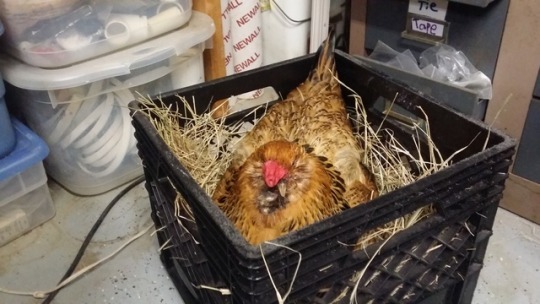
44 notes
·
View notes
Text
Imbolc Festivities
Lá Fhéile Bríde Sona Duit!!!
(Law leh BREEJ-uh SUN-uh ditch) Happy St. Bríd’s Day To You!

Gabhaim molta Bride Ionmhain í le hÉireann Ionmhain le gach tír í Molaimis go léir í Lóchrann geal na Laighneach ‘Soilsiú feadh na tire Ceann ar óghaibh Éireann Ceann na mban ar míne
Tig an gheimhreadh dian dubh Gearradh lena ghéire Ach ar Lá ‘le Bríde Gar dúinn Earrach Éireann Gabhaim molta Bride Ionmhain í le hÉireann Ionmhain le gach tír í Molaimis go léir í I praise Brigid Beloved in Ireland Beloved in all countries Let us all praise her The bright torch of Leinster Shining throughout the country The pride of Irish youth The pride of our gentle women The house of winter is very dark Cutting with its sharpness But on Brigid’s Day Spring is near to Ireland
– traditional Gaelic song for Bríd Today is the Feast Day of Saint Bríd! The festival date of Imbolc on February 1 stretches back to the Iron Ages in Ireland, but the ancient context of the festival is relatively enigmatic. It is very likely a celebration of the beginning of the pastoral season as this is when the ewes start to produce milk. However, being one of the four ancient feast days, the 1st of February and the night before are the focus of many supernatural occurrences and ceremonial traditions. In the last few hundred years these now focus on St. Bríd – who shares a name with a preChristian figure – who is worshipped and petitioned for blessings and favor. This would include a large feast of primarily dairy-based dishes in honor of the new agricultural season, so whip out the butter and cheese! There are many legends about St. Bríd in Ireland, legends that mix the values of ancient Irish heroes with the pious and monastic values of early Irish Christianity. “Brigit is the perfect example of Irish hospitality: she can (by a miracle) milk her cows three times in one day to provide a meal for visitors; she can outwit a king (in the cause of charity), as well as any pagan hero could have done and with far more charm.” (Hughes) She is a great leader of women “Indeed St Brigit’s foundation at Kildare was unique in sixth-century Ireland in being a double monastery for both men and women, each group following the same rule and using a common church, with the government of the whole community held jointly by the Abbess and the bishop-abbot.” (Hughes)

One way of celebrating her was to make a doll or Brideog in her image, which was escorted into or around the house in various manners varying village to village. Usually she was laid to rest inside the house, and divination ensued. “There [in Ireland] the churn staff, not the corn sheaf, is fashioned into the form of a woman, and called 'Brideog,' little Bride. The girls come clad in their best, and the girl who has the prettiest dress gives it to Brideog. An ornament something like a Maltese cross is affixed to the breast of the figure. The ornament is composed of straw, beautifully and artistically interlaced by the deft fingers of the maidens of Bride. It is called 'rionnag Brideog,' the star of little Bride. Pins, needles, bits of stone, bits of straw, and other things are given to Bride as gifts, and food by the mothers.Customs assume the complexion of their surroundings, as fishes, birds, and beasts assimilate the colours of their habitats. The seas of the 'Garbh Chriocha,' Rough Bounds in which the cult of Bride has longest lived, abound in beautiful iridescent shells, and the mountains in bright sparkling stones, and these are utilised to adorn the ikon of Bride. In other districts where the figure of Bride is made, there are no shining shells, no brilliant crystals, and the girls decorate the image with artistically interlaced straw.The older women are also busy on the Eve of Bride, and great preparations are made to celebrate her Day, which is the first day of spring. They make an oblong basket in the shape of a cradle, which they call 'leaba Bride,' the bed of Bride. It is embellished with much care. Then they take a choice sheaf of corn, generally oats, and fashion it into the form of a woman. They deck this ikon with gay ribbons from the loom, sparkling shells from the sea, and bright stones from the hill. All the sunny sheltered valleys around are searched for primroses, daisies, and other flowers that open their eyes in the morning of the year. This lay figure is called Bride, 'dealbh Bride,' the ikon of Bride. When it is dressed and decorated with all the tenderness and loving care the women can lavish upon it, one woman goes to the door of the house, and standing on the step with her hands on the jambs, calls softly into the darkness, 'Tha leaba Bride deiseal,' Bride's bed is ready. To this a ready woman behind replies, 'Thigeadh Bride steach, is e beatha Bride,' Let Bride come in, Bride is welcome. The woman at the door again addresses Bride, 'A Bhride! Bhride thig a stench, tha do leaba deanta. Gleidh an teach dh’an Triana,' Bride! Bride, come thou in, thy bed is made. Preserve the house for the Trinity. The women then place the ikon of Bride with great ceremony in the bed they have so carefully prepared for it. They place a small straight white wand (the bark being peeled off) beside the figure. This wand is variously called 'slatag Bride,' the little rod of Bride, 'slachdan Bride,' the little wand of Bride, and 'barrag Bride,' the birch of Bride. The wand is generally of birch, broom, bramble, white willow, or other sacred wood, 'crossed' or banned wood being carefully avoided. A similar rod was given to the kings of Ireland at their coronation, and to the Lords of the Isles at their instatement. It was straight to typify justice, and white to signify peace and purity--bloodshed was not to be needlessly caused. The women then level the ashes on the hearth, smoothing and dusting them over carefully. Occasionally the ashes, surrounded by a roll of cloth, are placed on a board to safeguard them against disturbance from draughts or other contingencies. In the early morning the family closely scan the ashes. If they find the marks of the wand of Bride they rejoice, but if they find 'long Bride,' the footprint of Bride, their joy is very great, for this is a sign that Bride was present with them during the night, and is favourable to them, and that there is increase in family, in flock, and in field during the coming year. Should there be no marks on the ashes, and no traces of Bride's presence, the family are dejected. It is to them a sign that she is offended, and will not hear their call. To propitiate her and gain her ear the family offer oblations and burn incense. The oblation generally is a cockerel, some say a pullet, buried alive near the junction of three streams, and the incense is burnt on the hearth when the family retire for the night.” (Carmichael - SLOINNTIREACHD BHRIDE)
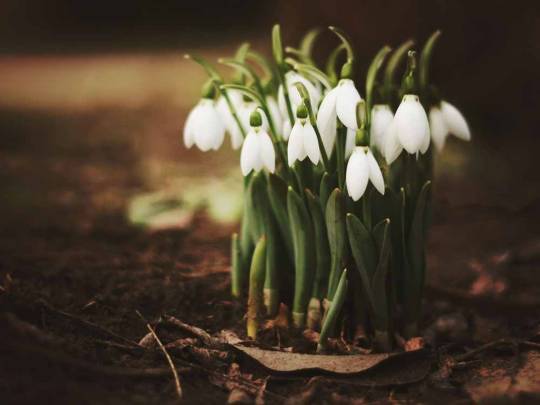
Another tradition on Imbolc is to create a Cros Bríde or Bríd cross out of reeds that were pulled on the eve of the festival. These grant protection throughout the end of winter and the rest of the year until new crosses are made in their place the following Imbolc. “But the entire round of the year is liberally sprinkled with days of festival, and if we begin with St. Briget it is not merely because she was Irish-born but because her feast marks the beginning of the pastoral year. The blessed Bridie was a cowherd and is therefore associated with cattle and with such flowers as the dandelion–the Plant of Bride–yielding a milky juice which was believed to nourish the young lambs in spring. St. Briget’s Feast was very popular and many superstitious practices, more or less Christianized, cling to the preparations made on St. Briget’s Eve, the last day of January. On that day rushes are fashioned into protective charms known as Briget’s Crosses, a name which illustrates how the church has won over pagan symbols*, for the ‘crosses’ take the form of either [sun wheels] or lozenges, and comparative evidence suggests that they are magic symbols of suns or eyes...A three legged [sun wheel], presumably an old form, is reserved for use in the byre: its shape may be compared with the Celtic triskele. The lozenge-shaped charms have their counterparts in many parts of the world... Briget’s Crosses are believed to protect the house and the livestock from harm and from fire. No evil spirit could pass the charm, which was therefore hung above the door of the house and byre. The rushes must be pulled, not cut, on St. Briget’s Eve, and care must be taken to fashion the crosses from left to right, with the sun. As a rule they are left in position until replaced the following year, though I have seen byres with many crosses thrust into the underthatch, the decaying accumulation of annual offerings. In Co. Galway similar crosses made of wood or straw were also placed in the rafters at Hallowe’en, and the discovery of a partly burnt rush cross which had been deposited in a megalith in Co. Limerick points to a more general cult of the ‘cross’. A ‘love-knot’ of similar shape, fashioned out of sedge leaves, is known from South Wales.

It was popularly believed that the saint wandered through the countryside on the eve of her feast day. Bread was left on the doorestep, and in some districts it was the custom to prepare a small bed of rushes or birch twigs and place it by the fire so that Bridie might come in and rest. Sometimes the last sheaf of harvest was used for the purpose. In south-western Ireland a doll made of straw–or decorated churn-staff–was carried from house to house by ‘Biddy Boys’, wearing straw masks such as are used by mummers and by strawboys at weddings, and singing songs in honour of the saint. they would solicit gifts and end the day in jollification. The evening was celebrated by a supper of pancakes [bannocks] taken from a plate laid on a rush cross, and as on the other quarter-days prognostications were made. A ribbon or piece of cloth exposed on St. Briget’s Eve became endowed with curative powers. It was believed that no work which involved the turning of a wheel should take place on the saint’s day. The placing of a periwinkle in each corner of the kitchen likewise hints at a remote pre-agricultural origin for the festival,* but it came to be associated with the pastoral promise of spring, of warmth, new grass, lambs and milk. It is said that the saint placed her foot in water on her feast day so that on that day it begins to warm up each year.” (Evans) *presumptuous *no it doesn’t The * above are obviously my notes on the passage, which is valuable but yikes.
It is traditional to observe the weather on the morning of Imbolc to divine the coming seasons. If it is rainy and cold then the winter crone, An Cailleach, will not be able to gather enough fire wood for her to continue her foray in this world, creating the sharp winds and snows of winter. Winter would be shorter, and the following seasons would bring good fortune! However, if it is warm and sunny the firewood supply of An Cailleach will be great, and she will continue her reign over winter for many more weeks until she turns back to stone before Summer. This could also mean sickness and trouble for the household. Sing the saint a song today, recite her genealogy and tell her stories. Make a cross, or a dollie for her, and eat lots and lots of cheese. Lá Fhéile Bríde Sona Duit!!! References: The Golden Age of Early Christianity in Ireland (7th and 8th centuries) by Dr Kathleen Hughes, in The Course of Irish History ed. Moody and Martin. Irish Folk Ways, by E. Estyn Evans The Carmina Gadelica Vol.I, by Alexander Carmichael
#Imbolc#la fheile bride#bride#brid#brigid#brigit#brighd#brighde#imbolg#celtic#folklore#irish#ireland#gaelic#scottish#scottland#tradition#february#saint brigit#polytheism#magic#folk magic#an cailleach#history#culture#irish culture
517 notes
·
View notes
Photo

I've had this coatdress for some time and it just gets more beautiful to me. Briget wears it well. By French designer, Maick Herald. With gorgeous studded embroidery details. New Wunderbar Vintage and retro fashion coming to @pop_up_vintage this Sunday, at St Stephens. Hope to see you there! . . . . #wunderbarvintage #popupvintagefairslondon #vintagefair #vintagefashion #vintageclothing #vintagetrader #brigetthemannequin #maickherald #turquoisedress #retrodress #coatdress #1940sstyle #1980sdress #1980sfashion #springfashion (at Kentish Town) https://www.instagram.com/p/Bvw1ey7H1Ok/?utm_source=ig_tumblr_share&igshid=1ppqv5dfxfn4e
#wunderbarvintage#popupvintagefairslondon#vintagefair#vintagefashion#vintageclothing#vintagetrader#brigetthemannequin#maickherald#turquoisedress#retrodress#coatdress#1940sstyle#1980sdress#1980sfashion#springfashion
0 notes
Text
Jobs at St. Brigets X-Ray Centre Limited, Benin City, Edo State 2017
Jobs at St. Brigets X-Ray Centre Limited, Benin City, Edo State 2017
June 2017 Job Vacancies at St. Brigets X-Ray Centre Limited, Benin City, Edo State Career Positions at St. Brigets X-Ray Centre Limited, Benin City, Edo State
St. Brigets X-Ray Centre Limited Jobs opportunities in Nigeria 2017
St. Brigets X-Ray Centre Limited, is a private group Radiological Practising for the last 40 years and is seeking to recruit suitably qualified candidates for the…
View On WordPress
#St. Brigets X-Ray Centre Limited Consultancy-Jobs in Nigeria June 2017#St. Brigets X-Ray Centre Limited Health Jobs#St. Brigets X-Ray Centre Limited Latest jobs in Nigeria June 2017#St. Brigets X-Ray Centre Limited Radiologist in Nigeria June 2017#St. Brigets X-Ray Centre Limited Receptionist June 2017#[email protected]
0 notes
Photo

St. Briget (Brigid) of Kildare Stained Glass St. Joseph’s Catholic Church Macon, GA. (Photo by Fran McColman),
0 notes
Photo









St Briget’s, Morsby
Source: The Man Who Gave His Horse To A Beggar, FB Page
0 notes
Photo

Briget has some fab new outfits to show off. As always Wunderbar Vintage brings a range of mix and match fashion coming to @pop_up_vintage this Sunday, at St Stephens. Hope to see you there! . . . . #wunderbarvintage #popupvintagefairslondon #ststephens #vintagefair #vintagefashion #vintageclothing #vintagetrader #brigetthemannequin #mixandmatch #mixitup #retrofashion #westernblouse #springfashion (at Kentish Town) https://www.instagram.com/p/BvwxE3JnZpy/?utm_source=ig_tumblr_share&igshid=mqypr8u6kpyg
#wunderbarvintage#popupvintagefairslondon#ststephens#vintagefair#vintagefashion#vintageclothing#vintagetrader#brigetthemannequin#mixandmatch#mixitup#retrofashion#westernblouse#springfashion
0 notes
